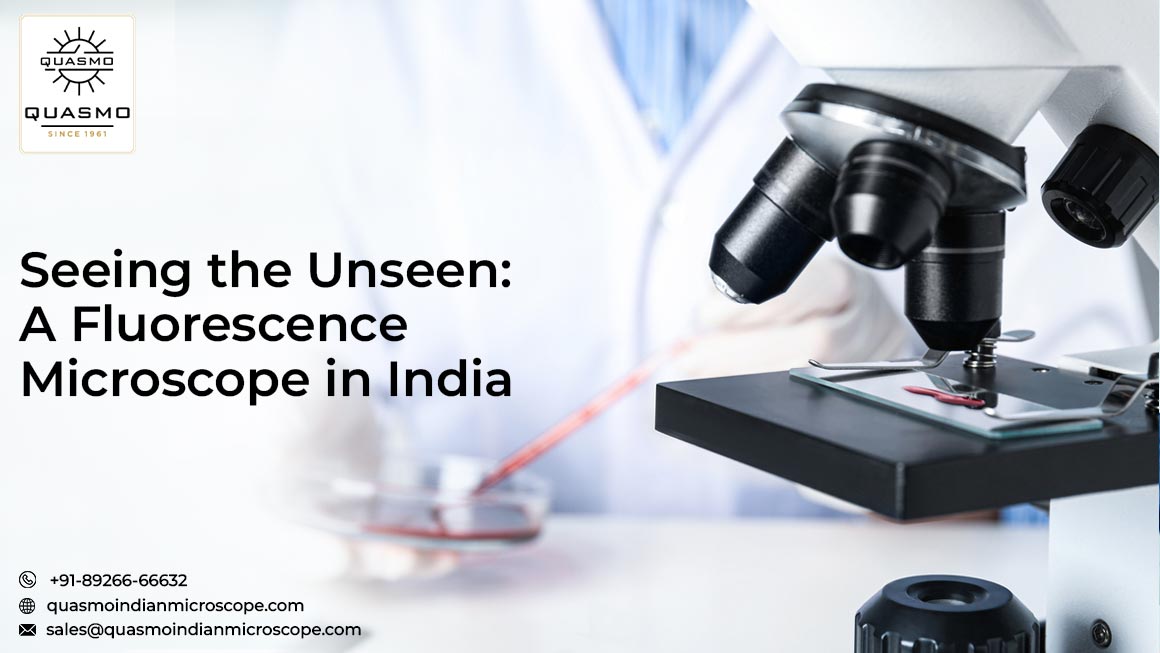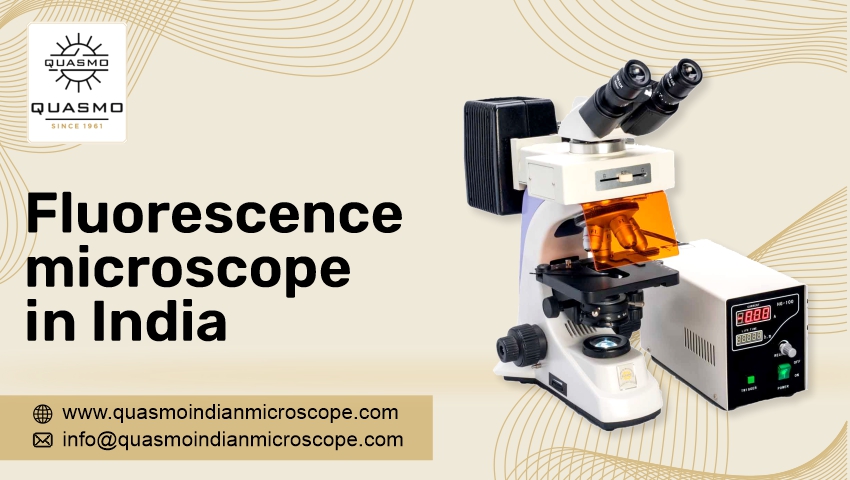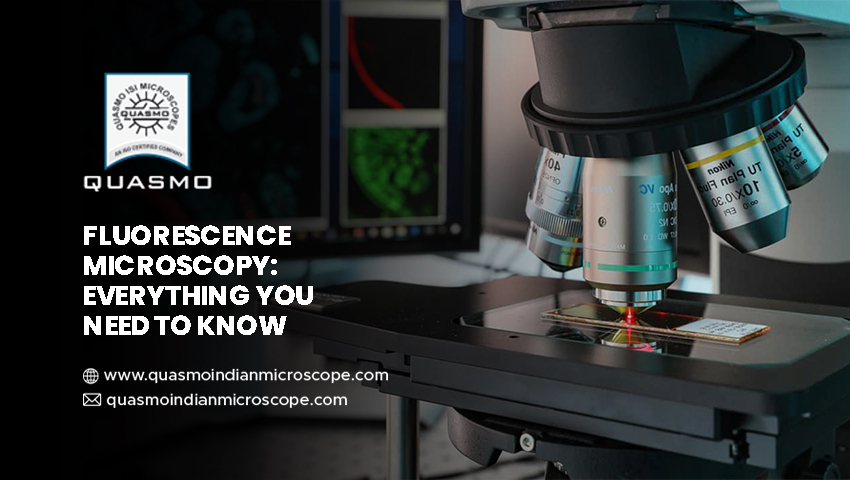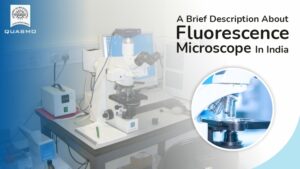
The Fluorescence microscope in India is a remarkable scientific tool that helps scientists see the invisible world. It uses special light to make tiny things, like cells and molecules, light up, so we can study them. In labs across the country, this microscope plays a crucial role in research, helping us understand diseases and unlock the secrets of nature. It’s a shining example of India’s contribution to cutting-edge science.
Key Components of a Fluorescence Microscope
A fluorescence microscope has several key components, including:
1. Light Source: This is a powerful light that shines on the sample.
2. Excitation Filter: It selects specific wavelengths of light to excite the sample.
3. Dichroic Mirror: It reflects the excitation light towards the sample.
4. Objective Lens: This lens gathers light from the sample and magnifies it.
5. Emission Filter: It allows only the emitted light, not the excitation light, to pass through.
6. Camera or Eyepiece: It captures and displays the fluorescent image.
These components work together to reveal fluorescent details in samples.
Uses and Advantages for Scientific Advancement
The fluorescence microscope in India serves several crucial uses and brings valuable benefits, making it an indispensable tool for researchers and scientists.
Uses:
1. Cellular Exploration: It helps examine cells, tissues, and cellular structures with remarkable precision.
2. Disease Research: It aids in understanding diseases like cancer, allowing for early detection and research into potential cures.
3. Genetic Studies: Facilitates genetic research, making it easier to study DNA, RNA, and genetic mutations.
4. Drug development: plays a vital role in drug discovery by enabling researchers to test the effectiveness of new drugs.
Benefits:
1. Precision: Offers high-resolution imaging, revealing fine details that are otherwise invisible.
2. Diagnosis: assists in accurate disease diagnosis and monitoring.
3. Scientific Advancement: Drives innovation and progress in the field of life sciences.
4. Education: supports learning and knowledge dissemination in medical and biological fields.
5. Biotechnological Advances: Contributes to the development of biotechnology and medical treatments, benefiting society as a whole.
Exploring the Diverse Applications of Fluorescence Microscopy in India
Fluorescence microscopes in India find widespread applications in various fields, aiding research and discovery. Here are some key applications in simple terms:
1. Cell biology: helps study living cells, their structures, and functions with precision.
2. Medical diagnostics: enables doctors to detect diseases at an early stage, improving patient outcomes.
3. Genetics: is crucial in genetic research, including DNA analysis and gene expression studies.
4. Cancer Research: Assists in understanding cancer cells, their behavior, and potential treatment options.
5. Neuroscience: allows researchers to investigate brain cells and their activities.
6. Microbiology: aids in studying microorganisms and their interactions.
7. Drug Development: Helps evaluate drug effectiveness and toxicity.
8. Environmental Science: Used in analyzing environmental samples and pollutants.
Fluorescence microscopes play a vital role in advancing knowledge, improving healthcare, and safeguarding the environment in India.
The Role of Fluorescence Microscope Manufacturers in India
Manufacturers of fluorescence microscopes in India play a crucial role in providing cutting-edge scientific tools to researchers, doctors, and educators. They design, produce, and distribute these microscopes, ensuring they meet high-quality standards. By doing so, they support scientific progress, medical diagnoses, and education in the country. These manufacturers contribute to the growth of technology and the advancement of research and healthcare by making advanced microscopy accessible to various institutions and professionals in India.
Wind up
Quasmo Microscope Works stands out as the premier manufacturer of fluorescence microscopes in India. We pride ourselves on delivering high-quality, cutting-edge instruments to support scientific research, healthcare, and education in the country. Our commitment to excellence ensures that you contact us today to explore our exceptional range of fluorescence microscopes and experience the difference we bring to the industry.








